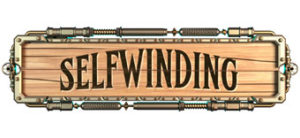Even though I’m an editor for hire, I firmly believe in self-editing. Each month I’m going to drop a tip for developing your ability to edit your own work or identify things to look for as you edit. Make sure to check out all the DIY Edit Tips to improve your self-editing.
11 Rhythm & Pacing: Dialogue Tags
The rhythm of a sentence can affect readability, understanding, and emphasis. A clunky sentence can cause confusion, while a well crafted one rolls off the tongue and right into a reader’s brain. Good sentences seem effortless, but they require a lot of attention from the writer during revision.
Dialogue tags, or attributions, are primarily a functional element in writing. They efficiently identify who is speaking, but, even when using a simple construction like “he said” or “she said,” attributions can be used to guide the rhythm of sentences and scenes.
A dialogue tag can go before, after, or in the middle of a line of dialogue, which means it can affect the sentence rhythm in a number of ways. Consider the different rhythms of these three attribution placements:
(1) “The heart isn’t the problem,” Jacob said.
(2) Jacob said, “The heart isn’t the problem.”
(3) “The heart,” Jacob said, “isn’t the problem.”
The first example is the most utilitarian. It’s the construction most often seen in modern literature with the dialogue followed by the attribution. It’s perfect if this is just another sentence in a fast-paced conversation.
The second example is an inversion of the most common construction, beginning with the attribution and ending with the dialogue. This places more emphasis on the speaker. It’s easy to imagine this construction is used because Jacob is interrupting other characters arguing about the problem.
The third example uses the attribution to break the dialogue. This slows the delivery of the sentence, leading to a dramatic effect. (It can also be used to show how a character is speaking, taking a big pause after “heart.”) It affects the rhythm of the sentence, placing greater emphasis on “the heart,” by separating it from the rest of the sentence. This is useful if the dialogue is a major reveal, for example if Jacob is going to bridge the conversation into what is the problem (it’s not the heart, it’s the brain).
Varying the placement of dialogue tags and using them to control the flow of sentences, or to emphasize specific sections of dialogue, can be a good first step to crafting the right rhythm and pacing for your sentences and scenes.
Like what you read? Help me continue making this content by leaving a tip through Ko-fi.
